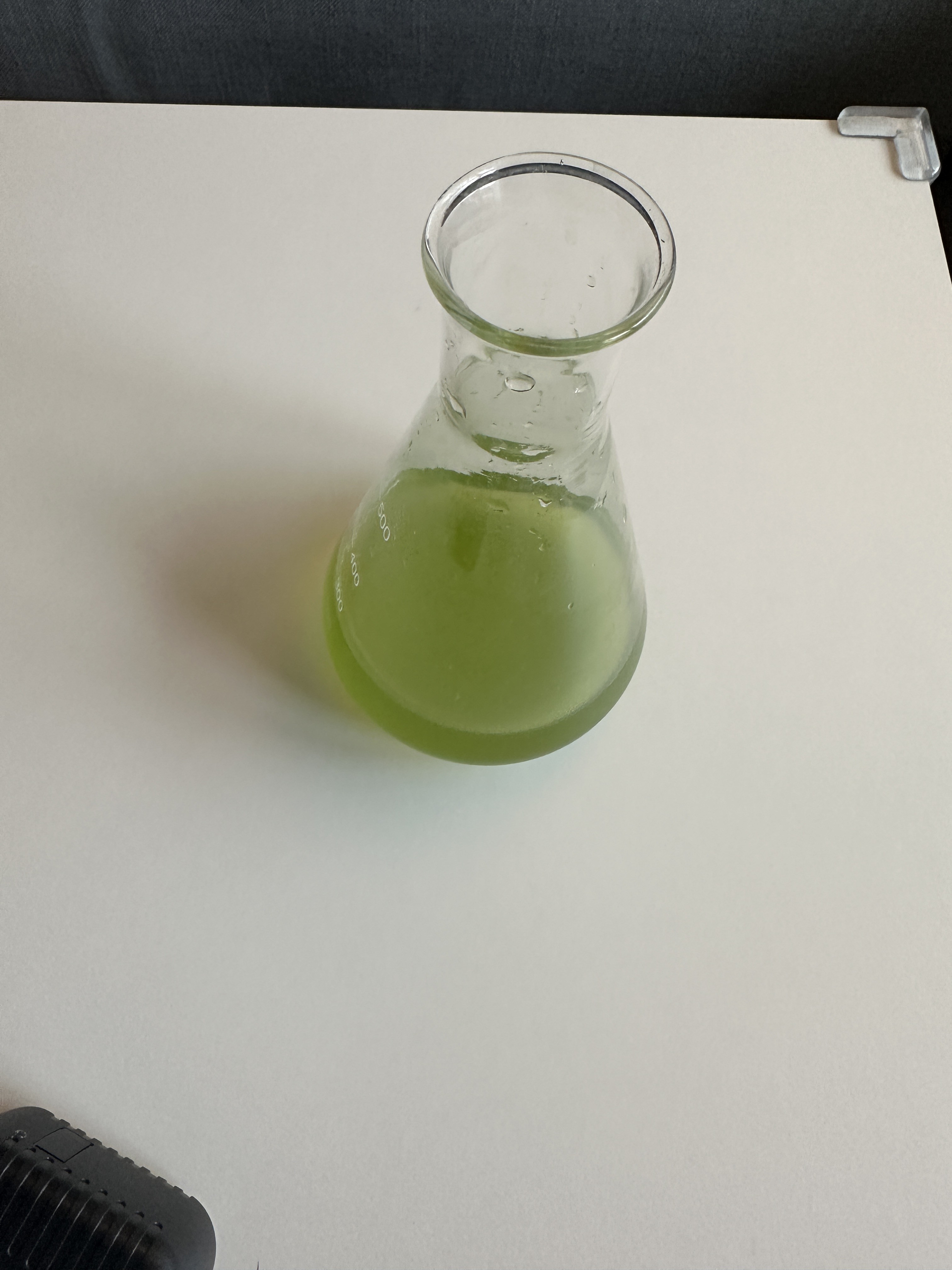The most important part of this project is the MicroAlgae themselves!
I've compiled some resources on how to care for them but just like houseplants, you have to feel your way through it. Each species is different!
Lets Dive in!
Choosing the Right Algae Species:
-
Chlorella: Chlorella is a popular choice due to its rapid growth rate and high tolerance to varying light and temperature conditions. Its vibrant green color makes it an aesthetic choice for AlgaLite.
-
Spirulina: • Known for its nutritional benefits, Spirulina also exhibits a fast growth rate. Its blue-green hue can add a different shade to your living lamp. While Spirulina is known for its edible nature and health benefits, I don't recommend growing this to eat before the system is engineered for that.
-
Dunaliella: Dunaliella is a salt-tolerant algae species, making it a unique choice for those interested in exploring saline or brackish water environments in their projects. This is what I've used as it's the most resilient one of them all and is great for learning.
Cultivating Microalgae:
-
Starting Culture:
Obtain a starter culture from a reputable source or a local university with an algae collection. Ensure that the culture is free of contaminants. I got mine from a local university. They are usually very helpful if its for learning purposes. Otherwise there are sellers on Ebay.
-
Nutrient Media:
Prepare a nutrient-rich media for your algae. Commercially available algae growth media or a homemade mix of essential minerals and nutrients will suffice. I've used ordinary plant fertilizer with a 1-1-1 ratio as you just need a small amount
-
Lighting:
Algae require light for photosynthesis. Ensure your AlgaLite lamp provides adequate light, adjusting the intensity and duration to match the needs of your chosen algae species.
-
Temperature and pH:
Maintain a stable temperature and pH level within the recommended range for your algae species to thrive. You can use a pH meter if you have one from gardening, o Aeration and Mixing:
Aeration provides the necessary carbon dioxide for photosynthesis, and mixing ensures even light distribution and nutrient availability.Monitoring and Maintenance:
Regularly check the health and growth of your algae. Maintain cleanliness to prevent contamination, and replenish nutrients as needed.
-
Troubleshooting:
Poor Growth: Assess light, nutrient, and CO2 availability. Adjust as necessary.
Contamination: If other organisms invade your culture, you may need to start
anew with a sterile setup.
How to acquire algae for your lamp:
- Local Universities or Research Institutions: Many universities and research institutions maintain collections of microalgae cultures. Contacting the biology or environmental science departments may yield leads to obtaining a starter culture.
- Online Suppliers: There are various online platforms that sell microalgae cultures. Websites like Algae Research Supply or Carolina Biological Supply Company are reputable sources. Ensure to check the reviews and possibly get in touch with the supplier to discuss your project and the most suitable algae species. You
- Aquarium Stores: Some aquarium stores carry microalgae cultures as they are used in aquariculture for feeding zooplankton and other marine organisms. They might have a limited species selection, but it's a good local option.
- Algae Culture Kits: Some online suppliers offer algae culture kits that come with everything you need to start growing algae, including the algae culture itself. This could be a convenient option, especially for beginners.
List of online suppliers:
-
Algae Research Supply:
• They offer a variety of algae cultures suitable for experimentation, science fairs, and exploring photosynthesis. This could be a good source for obtaining specific algae strains needed for your project1.
-
Etsy (India):
• On Etsy India, you can find live cultures of Chlorella algae, which is known for its rapid growth rate and is often used in projects like AlgaLite. The platform might have other algae species as well2.
-
Carolina Biological Supply:
• They offer a range of algae products including Green Algae and Chlamydomonas. This could be a suitable source if you are looking for a variety of options or specific strains3.
-
Livealgae UK:
• Specialized in cultivating macroalgae for marine aquariums, Livealgae UK could provide a unique variety of algae species. They pride themselves on offering clean macroalgae species, which is crucial for a project like AlgaLite4.
-
Varicon Aqua:
• They supply live algal cultures in various formats, from agar plates to larger volumes. This could be a useful source if you are looking to start with a smaller culture and grow it yourself over time5.
Cultivating microalgae for your AlgaLite lamp is a journey that intertwines biology with technology. The right algae species and proper care can significantly enhance the beauty and functionality of your living lamp, bringing you a step closer to a sustainable and educational lighting solution. Happy growing!

 Keenan Pinto
Keenan Pinto
Discussions
Become a Hackaday.io Member
Create an account to leave a comment. Already have an account? Log In.